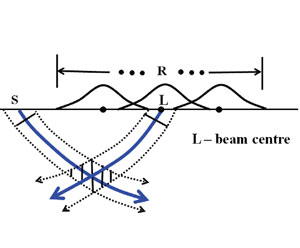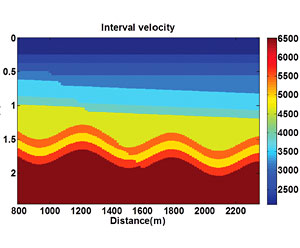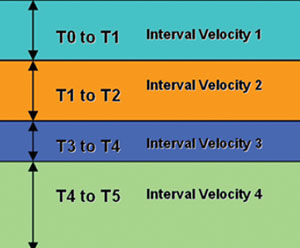I am pleased to have observed a renewed interest in seismic signal processing at our latest annual convention. We had an unprecedented number of sessions devoted Imaging is always the ultimate aim of seismic processing, and this is usually accomplished primarily by one of the last steps in the processing sequence: migration. This month we have a very interesting and eclectic group of papers devoted to the topics of migration and imaging. Some of these papers stem from the most recent CSEG annual convention. As always, there were a good number of presentations related to migration and imaging. In the old days (maybe even just 5-10 years ago!) migration papers used to be confined to topics such as the development of wave-equation migrations, or complex beam migrations, and a comparison of these newer methods to older methods such as Kirchhoff. Prestack time migration was becoming more and more standardized, and the possibility of including VTI and TTI effects was becoming established.
Nowadays, it is quite astonishing to take in the papers on migration topics such as full waveform inversion, reversetime migration, least-squares migration and orthorhombic migration and listen to how matter-of-fact these processes are all becoming. Interestingly, most of these types of sophisticated migration are being applied to marine data, and applications to land data are lagging behind, as always, because of all the usual near-surface, noise and sampling issues that plague land data. Perhaps the next 5 to 10 years will see this situation change completely.
Tianfei Zhu presents a method of migration called complexbeam migration and focuses on applications to land data. Complex-beam migration is an important variation on Gaussian-beam depth migration which allows the solution of the complex beam around the central beam to be more regular and therefore leads to fewer difficulties in handling the rapidly varying near-surface structures. The examples show superior depth images compared to Kirchhoff, waveequation migration, and the results compare well to reversetime migration, but at the same time the complex-beam method retains many of the advantages of the Gaussianbeam method, such as the high dip capabilities and reduced migration swing artifacts.
Bancroft, Guirigay and Isaac discuss the topic of applying deconvolution after migration. Normally, of course, we are used to applying deconvolution fairly early in the processing flow. The authors argue that migration should also be applied after migration. Although this has been performed on marine data in the past, the authors have encountered opposition when applying it to land data. An example of deconvolution after migration is provided on the 2D line recently acquired by The CREWES Project near Hussar, Alberta. Arguments are provided in support of this novel practice.
Yousefzadeh, Bancroft and Margrave present a very useful review of least-squares prestack migration and its applications. The paper discusses both the advantages and disadvantages of using least-squares migration. Among its advantages is its ability to improve image resolution, overcome limitations due to irregular and sparse acquisition, reconstruct missing data, improve the evaluation of velocities, and improve time-lapse studies. The method is computeintensive and requires a good starting velocity model.
If you are unfamiliar with seismic imaging, or confused by a lot of the concepts and terms that are used in discussions about migration, an excellent paper to read is Brian Schulte’s overview paper on the fundamentals of imaging. The purpose of this paper is to review the basic concepts of imaging, migration algorithms, and velocity model building. The migration algorithms presented are based in the Gulf of Mexico but are applicable throughout the world.
I would like to thank John Fernando for all his efforts in putting together this edition of the Recorder, and especially for drumming up many of the imaging papers themselves. I hope you enjoy reading them.















Join the Conversation
Interested in starting, or contributing to a conversation about an article or issue of the RECORDER? Join our CSEG LinkedIn Group.
Share This Article